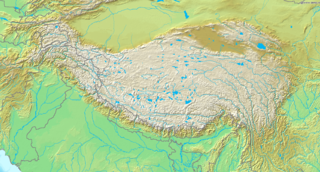 W
WThe 1947 Assam earthquake occurred on 29 July at 13:43 UTC with an Mw of 7.3 and a maximum EMS-98 intensity of V (Strong).
 W
WThe 1950 Assam–Tibet earthquake, also known as the Assam earthquake, occurred on 15 August and had a moment magnitude of 8.6. The epicentre was located in the Mishmi Hills, known in Chinese as the Qilinggong Mountains (祁灵公山), south of the Kangri Garpo and just east of the Himalayas in the North-East Frontier Agency part of Assam, India. This area, south of the McMahon Line and now known as Arunachal Pradesh, is today disputed between China and India.
 W
WThe 1952 Damxung earthquake struck Tibet with moment magnitude of 7.5 in the early morning hours of August 18. The epicenter was located in the Nyenchen Tanglha Mountains in Damxung County, Lhasa Prefecture, Tibet Autonomous Region, People's Republic of China. There was significant damage in Damxung (Dangquka) and nearby Nagqu County. It was felt in Lhasa, over 100 km (62 mi) to the south.
 W
WThe 1997 Manyi earthquake occurred on November 8 at 10:02 UTC. The epicenter was in Nagqu Prefecture in northern Tibet, China. The focal mechanism indicates a lift-lateral strike-slip movement. This earthquake had a surface rupture of 17 km (11 mi) long with up to 7 m (23 ft) of left-lateral slip along the Manyi fault, a westward continuation of the Kunlun fault, offset about 100 km (62 mi) to the south. Normally, the continental crust is about 35 km (22 mi) thick, but it reaches 70 km (43 mi) thick under the Tibetan Plateau. This earthquake ruptured up to 20 km (12 mi) of the top part of the local continental crust.
 W
WThe 2008 Damxung earthquake hit Damxung County, Xizang (Tibet), west of Lhasa, in the People's Republic of China around 16:30 China Standard Time on October 6. The Chinese state media reported that the earthquake caused 10 deaths as of October 7. Three aftershocks above magnitude 5 followed.
 W
WThe April 2015 Nepal earthquake killed nearly 9,000 people and injured nearly 22,000. It occurred at 11:56 Nepal Standard Time on 25 April 2015, with a magnitude of 7.8Mw or 8.1Ms and a maximum Mercalli Intensity of VIII (Severe). Its epicenter was east of Gorkha District at Barpak, Gorkha, and its hypocenter was at a depth of approximately 8.2 km (5.1 mi). It was the worst natural disaster to strike Nepal since the 1934 Nepal–Bihar earthquake. The ground motion recorded in the capital of Nepal was of low frequency, which, along with its occurrence at an hour where many people in rural areas were working outdoors, decreased the loss of property and human lives.
 W
WA major earthquake occurred in Nepal on 12 May 2015 at 12:50 pm local time with a moment magnitude of 7.3, 18 kilometres (11 mi) southeast of Kodari. The epicenter was on the border of Dolakha and Sindhupalchowk, two districts of Nepal. This earthquake occurred on the same fault as the larger magnitude 7.8 earthquake of 25 April, but further east than the original quake. As such, it is considered to be an aftershock of the April quake. It struck at a depth of 18.5 km (11.5 mi). Shaking was felt in northern parts of India including Bihar, Uttar Pradesh and West Bengal. Tremors were felt as far as about 2,400 km away from the epicenter in Chennai.